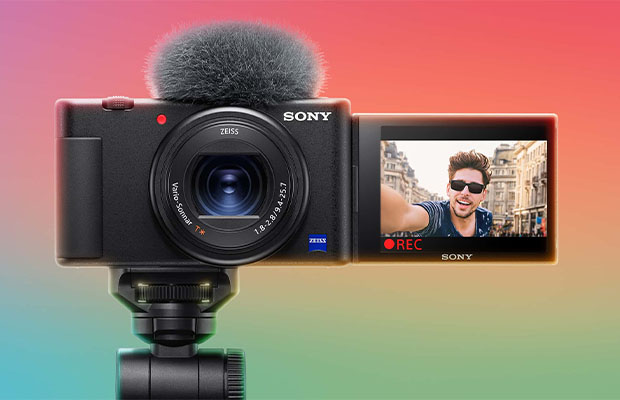13 Best Lens For Vlogging 2022: Reviews & Buying Guide
One of the most popular things today is vlogging! It enables people to share what they do, and the aspect of vlogging that I like is that everyone can share their talent!
While picking the best lens for vlogging is a tricky task. Selecting the ideal camera for vlogging is difficult, but this decision is arguably more crucial.
You won’t need to worry; this article will assist you in locating the ideal lens for vlogging.
Table of Contents
Best Lens For Vlogging: Our Top Picks
- 1. Sony E 18-135mm f/3.5-5.6 OSS
- 2. Panasonic Lumix G X Vario 12-35mm f/2.8 II ASPH. POWER O.I.S.
- 3. Sony E 10-18mm f/4 OSS
- 4. Canon EF-M 11-22mm f/4-5.6 IS STM
- 5. Panasonic Lumix G Vario 7-14mm f/4 ASPH.
- 6. Olympus M.Zuiko Digital ED 12-100mm f/4 IS PRO
- 7. Fujinon XF 16-80mm f/4 R OIS WR
- 8. Fujinon XF 10-24mm f/4 R OIS WR
- 9. Olympus M.Zuiko Digital ED 8-25mm f/4 PRO
- 10. Canon EF-M 18-150mm f/3.5-6.3 IS STM
- 11. Nikon NIKKOR Z DX 16-50mm f/3.5-6.3 VR
- 12. Nikon NIKKOR Z DX 18-140mm f/3.5-6.3 VR
- 13. Canon EF-S 10-18mm f/4.5-5.6 IS STM
The Best Lenses For Vlogging In 2022
1. Sony E 18-135mm F/3.5-5.6 OSS
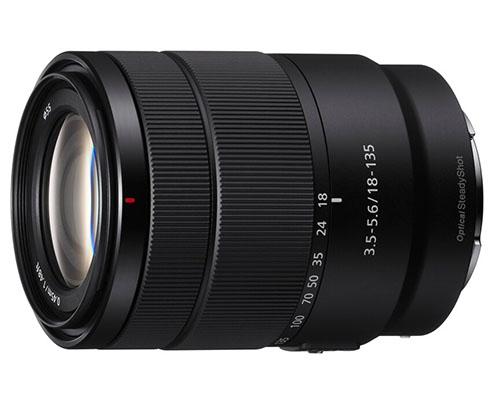
We really like this neat little APS-C semi-superzoom from Sony
Reasons To Buy
- Great zoom range
- Neat, lightweight construction
- Optical stabilization
Reasons To Avoid
- Variable maximum aperture
- Relies on digital corrections
The Sony E 18-135mm f/3.5-5.6 OSS is halfway between a superzoom and a normal zoom lens, but it’s also compact, lightweight, and user-friendly. With optical stabilization, it functions admirably as a long-range substitute for the common kit lens. The variable maximum aperture is the only drawback for vlogging, but that won’t necessarily be an issue unless you prefer to film at a fixed aperture setting. If it is, there is also the frequently disregarded Sony E PZ 18-105mm f/4 G OSS, which costs about the same, has a smaller zoom range, a constant f/4 maximum aperture, and a power zoom lever. Though its optical performance does rely on digital correction, the Sony E 18-135mm f/3.5-5.6 OSS is a step above the typical superzoom lens thanks to its attractive design and good optical performance. S
2. Panasonic Lumix G X Vario 12-35mm f/2.8 II ASPH. POWER O.I.S.
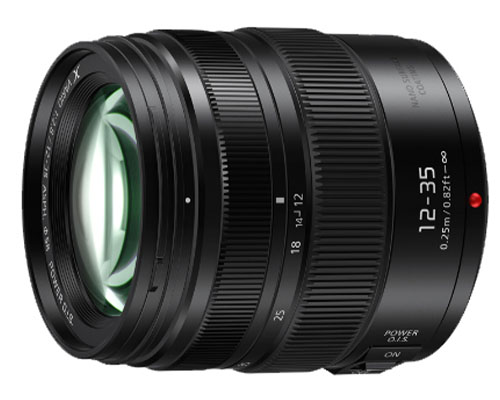
We think this 12-35mm hits the sweet spot for size, performance, and versatility
Reasons To Buy
- Compact and portable
- Constant f/2.8 maximum aperture
- Optical stabilization
Reasons To Avoid
- Only 3x zoom range
One of Panasonic’s older lenses, it is now frequently overlooked in favor of the 12-60mm zooms. It does, however, have many advantages over these other lenses. First of all, it is incredibly light and simple to use on a gimbal or mini-tripod for a constant f/2.8 24-70mm equivalent zoom. With Panasonic’s Dual IS, it has optical stabilization. in-body stabilization and the zoom control is very light and smooth. The additional zoom range, added weight, and variable maximum aperture of the 12-60mm lenses are things we believe we would prefer to have instead of this.
3. Sony E 10-18mm F/4 Oss
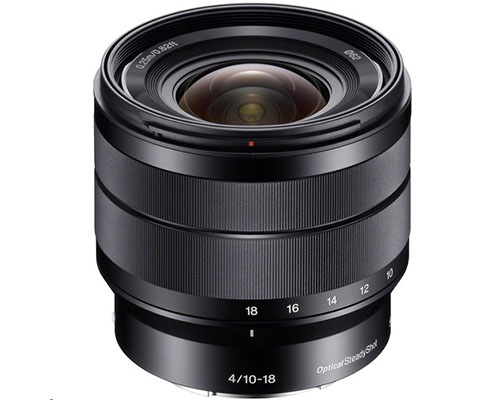
Best ultra-wide lens for stills photographers but ideal for Sony vloggers
Reasons To Buy
- Compact design
- Constant f/4 maximum aperture
- Optical stabilization
Reasons To Avoid
- Limited zoom range
Although the Sony 10-18mm is a fairly common lens for still photos, vloggers have discovered a new use for it. For stills photographers, the zoom range of this lens, which has been available in Sony’s catalog for some time, appears to be a little limited. But the rise of vlogging has given this lens new life. When we reviewed the ZV-E10 vlogging camera, Sony actually suggested using this lens because of its ultra-wide angle of view, which is ideal for selfie vlogging. A constant maximum aperture and integrated optical stabilization will appeal to manual-only filmmakers. This kind of ultra-wide lens is also helpful for routine interior and city street filming.
4. Canon EF-M 11-22mm f/4-5.6 IS STM
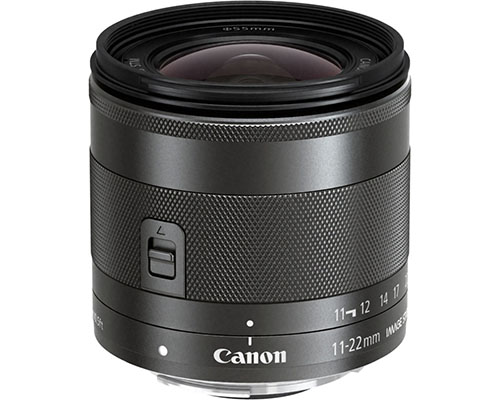
At least Canon gets it – we need an ultra-wide lens that’s also small and light
Reasons To Buy
- Great wide view for self-filming
- Optical stabilization
- Light and portable
Reasons To Avoid
- Somewhat plasticky
The tiny Canon EF-M 11-22mm f/4-5.6 IS STM is the perfect lens for selfie vlogging because it has an effective focal range of 18-35mm, which is comfortably wide enough to include you and your background in the shot. With an f/4–5.6 maximum aperture range, the specifications are fairly basic, but the STM autofocus is quick and quiet, and there is an image stabilizer built in—something you can’t always rely on with ultra-wide zooms.
5. Panasonic Lumix G Vario 7-14mm f/4 ASPH.
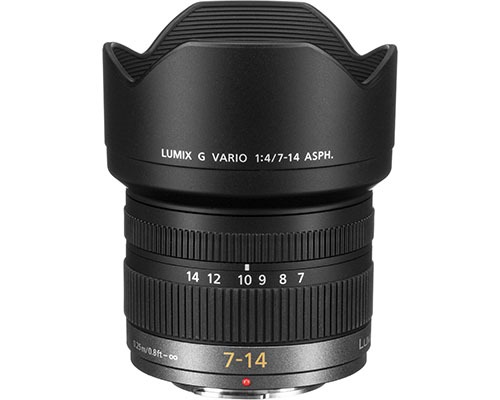
A little hefty for a Micro Four Thirds lens, but there aren’t any better choices
Reasons To Buy
- Ultra-wide angle of view
- Constant f/4 maximum aperture
Reasons To Avoid
- Can’t use filters
- Not small, fairly expensive
Surprisingly, there isn’t much of a selection of small, ultra-wide zooms for MFT cameras. We would choose this over the Olympus 9-18mm because it is compact but also seems expensive and out of date. Although it’s an f/2.8 monster, Olympus also makes a 7-14mm lens. Therefore, for vlogging purposes, both for self-filming and general vlogging use, we would choose the more portable Lumix G Vario 7-14mm f/4 ASPH. We might also use this lens on Olympus MFT models in addition to Pansonic Lumix G cameras. For complete information, see our review of the Panasonic Lumix G Vario 7-14mm f/4 ASPH(opens in new tab).
6. Olympus M.Zuiko Digital ED 12-100mm f/4 IS PRO
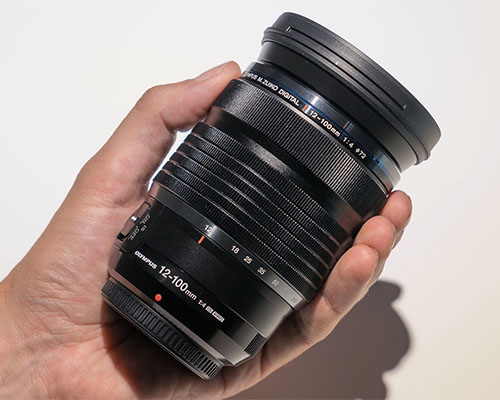
Powerful but hefty, a lens we’d choose for more serious projects not every walkaround use
Reasons To Buy
- Huge zoom range
- Constant f/4 maximum aperture
- Optical stabilization
Reasons To Avoid
- Pretty big and heavy
- Expensive too
The M.Zuiko Digital ED 12-100mm f/4 IS PRO is a heavy lens that is on the edge of being a useful vlogging lens, but it has a wide 24-200mm equivalent zoom range, a constant f/4 maximum aperture, and in-body stabilization that provides up to 6.5 stops of compensation on compatible Olympus bodies. There is no lens like it if your gimbal can handle it (it’s actually not that bad), as the optical performance is excellent for a lens of this range.
7. Fujinon XF 16-80mm f/4 R OIS WR
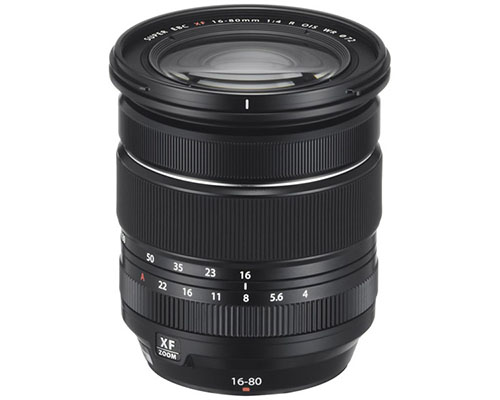
It feels a bit big on anything smaller than an X-T4, but this lens has top vlogging credentials
Reasons To Buy
- Great everyday zoom range
- Constant f/4 maximum aperture
- Aperture ring
- Optical stabilization
Reasons To Avoid
- On the heavy side
Several Fujifilm standard zoom lenses are available, such as the 18-55mm f/2.8-4 (okay, but variable maximum aperture) and 16-55mm f/2.8 (good, but large). We believe that this one is the most fascinating. It is especially helpful on bodies without built-in image stabilization because it has optical image stabilization, an equivalent focal length range of 24-120mm, and a constant f/4 maximum aperture. With its quick and nearly silent AF, the XF 16-80mm f/4 R OIS WR is a fantastic lens for both regular photography and vlogging.
8. Fujinon XF 10-24mm f/4 R OIS WR
Best choice for vloggers who need an ultra-wide lens, but we wish it was a bit smaller
Reasons To Buy
- Ultra-wide angle of view
- Constant f/4 maximum aperture
- Optical stabilization
- Aperture ring
Reasons To Avoid
- Pretty big for an APS-C camera
- Optically average
The XF 10-24mm f/4 R OIS WR is a great option if you need to film yourself. Because there is nothing smaller in this focal range in the Fujifilm lens lineup, it is a fairly large lens to use for vlogging. However, this cannot be helped. It has a constant maximum aperture of f/4, quick and quiet AF, and optical stabilization, which is very helpful on cameras like the X-T30 II or X-T200, for example. Although we find the corners of the frame to go a little soft at the maximum 24mm setting, the optical performance is also good.
9. Olympus M.Zuiko Digital ED 8-25mm f/4 PRO
It’s a bit bigger than we’d like, but this could be the best one-stop vlogging lens
Reasons To Buy
- Unique ultra-wide-standard zoom range
- Constant f/4 maximum aperture
- Excellent optical quality
Reasons To Avoid
- Pretty big and heavy for MFT
- Fairly expensive
It’s pretty special that the Olympus M.Zuiko Digital ED 8-25mm f/4 PRO exists. Panasonic’s full frame 20-60mm zoom is the only other comparable lens we can think of. A short standard zoom and an incredibly wide lens are combined in the Olympus 8-25mm, which has an equivalent focal range to a full frame camera of 16–50mm. For once, you might be able to use the same lens for both taking and editing selfie videos. The M.Zuiko Digital ED 8-25mm f/4 PRO has a fast, quiet AF system, a constant maximum aperture of f/4, and excellent optical performance. Unfortunately, by MFT standards, it is a fairly large and heavy lens.
10. Canon EF-M 18-150mm f/3.5-6.3 IS STM
A handy walkaround lens when you want a much longer focal range
Reasons To Buy
- Great zoom range
- Light to carry
- Optical stabilization
Reasons To Avoid
- Somewhat plasticky
- Only f/6.3 at full zoom
Although the standard Canon 15-45mm kit lens is quite good, you can make it even better by purchasing this 18-150mm semi-superzoom. It offers plenty of scope for semi-wide shots up to farther away subjects with an equivalent focal range of 29-240mm. Although the f/6.3 maximum aperture at full zoom is a little disappointing, you won’t likely notice the aperture changing if you shoot in P (program) mode. However, since it isn’t built into Canon EOS M bodies, optical stabilization is something you do need.
11. Nikon NIKKOR Z DX 16-50mm f/3.5-6.3 VR
Until the Nikkor Z DX lens range fills out a little, this tiny standard kit lens is hard to beat
Reasons To Buy
- Space-saving retracting mechanism
- Usable everyday focal range
- Optical stabilization
Reasons To Avoid
- Only f/6.3 at longest zoom setting
- Barely wide enough for self-filming
The Nikon Z50 and Nikon Z fc typically come with this retracting “pancake” zoom as standard equipment. However, this is still something to think about if you purchased a camera body only or one with a different kit lens. Although the variable maximum aperture is somewhat disappointing, dropping to f/6.3 at 50mm, the zoom range is fairly typical for a kit lens. Although neither the Z50 nor Z fc have in-body stabilization, you do have access to Nikon’s Vibration, which you will undoubtedly want.
12. Nikon NIKKOR Z DX 18-140mm f/3.5-6.3 VR
Best lens if you need a longer focal range, but it doesn’t go especially wide.
Reasons To Buy
- Useful extended zoom range
- Optical stabilization
Reasons To Avoid
- Only f/6.3 at full zoom
- Not wide enough for selfie-filming
The standard Nikkor Z DX 16–50mm zoom is good but has a somewhat constrained field of view. With an equivalent focal range of 27-210mm, the comparatively new NIKKOR Z DX 18-140mm f/3.5-6.3 VR goes much further. That’s almost “superzoom” territory, but even so, this lens is still reasonably small and light, so you could use it all day without feeling its weight on your body. On the negative side, it’s actually not as “wide” as the standard 16-50mm at its shortest focal length. Despite the fact that these cameras are excellent for regular vlogging, the lack of a selection of lenses makes it more difficult to use them for self-directed videography. As of now, there are no Nikon Z DX ultra-wide lenses. Instead of using a handheld gimbal or grip, you’ll need to set them up on a tripod and stand back.
13. Canon EF-S 10-18mm f/4.5-5.6 IS STM
The best ultra wide-angle lens for travel is one made by the renowned Canon company.
Reasons To Buy
- Affordable
- Ultra-wide angle field of view
- Optical stabilization
- Sharp throughout range
Reasons To Avoid
- Lens hood not included
Both this Canon lens and its construction are excellent. It weighs only 8.5 ounces and has dimensions of 2.83 x 2.95 x 2.95 inches. When you travel, this little, light lens quickly becomes your best companion.
One of the most popular coatings from the Canon brand is the Super Spectra Coating, which is added to this Canon lens to help with flare and ghosting reduction. It has two elements—one UD and one aspherical—to be specific.
Being an ultra-wide-angle lens, this Canon lens has a focal length that ranges from 10mm to 18mm, and its maximum aperture ranges from f/4.5 to f/5.6.
How To Become A Vlogger?
There isn’t any law that says you have to do this or that. However, there are some things that vloggers themselves reveal! Those things include:
Find The Thing That You Do Better
You must have an idea of the kinds of videos you plan to share on your vlog before you start it, right? There must be something you can do better than others, and among those things are the vlogging formats I mentioned earlier.
Create A Channel
The next step is to create your channel after deciding what you’re going to do. You should do the same thing! Vloggers always choose unique names for their channels.
Publish Frequently
You must actively participate in your channel and post frequently if you want to build an audience. People who watch your videos will be able to tell that you’re trying to be your best selves in this way!
Check The Comments
You can engage with your audience and demonstrate that you value their opinions by reading the comments and responding to any that contain questions or anything else.
Use Some Marketing
The best marketing platform today is social media! Share your video content on social media to reach a huge audience and, in essence, gain fame!
Related Reading: Vlogging Tips For Beginners
Buying Guide For Lenses For Vlogging
- A longer focal range: Vlogging can involve unexpected encounters as well as the need to shoot a variety of subjects, including those that are close up and far away, big and small, moving and still. You can adapt to each of these circumstances if a single lens has a wide focal range.
- A wide maximum aperture: This has two benefits: it lets more light into the sensor, which improves the quality of low-light footage, and it enables the creation of shallow depth of field, which makes a main subject stand out against a skillfully blurred background. Performing pieces for the camera or conducting interviews benefit greatly from this.
- Fast, silent autofocus: You won’t want to constantly be manually focusing when vlogging, so you’ll need a lens with a strong autofocus system. Choosing a lens with an STM (stepping motor) autofocus system or something comparable is necessary because you don’t want a loud whirring autofocus system to ruin the sound of your vlogs.
- Size and weight: If you’re shooting handheld or with a gimbal, you shouldn’t have to carry anything that is too heavy.
- Optical stabilisation: This can give you an advantage in maintaining your footage’s smoothness even in challenging low-light situations.
- Power Zoom: Making your zoom actions fluid and polished without some of the jerkiness that can result from doing it manually is another nice feature if you can get it.
As you can see, there are numerous things to consider. Our list of the top lenses for vlogging currently has taken all of these considerations into account. There should be the right lens for you no matter your vlogging setup because we looked around for lenses that were affordable for a variety of budgets and mounts.
Our Verdict
The best lens for this situation, in my opinion, is the Canon EF-S 10-18mm f/4.5-5.6 IS STM because it is the best travel lens. If you enjoy exploring new places and making vlogs, this lens will be a great investment.
FAQs
What is vlogging?
A vlog, as was already mentioned, is essentially a type of blog where you can find various videos of people discussing various topics.
What are the different types of vlogs?
The internet is filled with different kinds of vlogs. However, some of the most famous types of vlogs are:
- Comedy
- Traveling
- Fashion/Beauty
- Tech Reviews
- Gaming
- Family
- Fitness/Food
- Sports
Hollywood-caliber vlogs come in a variety of forms, but the majority of them require pricey tools, like an 8K camera.
Do I need a lens for vlogging?
As some of you may already be aware, the lens has a significant impact on nearly every aspect of recording videos of any kind. A vlogger would want the best video quality while recording so that, when it is uploaded, the audience can see it in the clearest way possible.
Yes is the simplest response. When vlogging, I would advise you to use a lens.
Is there a difference between blog and vlog?
A blog and a vlog are completely different from one another even though they sound similar and in some ways are the same thing. In contrast to vlogs, which only contain video recordings of a single topic, blogs contain written content on a variety of subjects.
Read More: Difference Between Blog And Vlog
